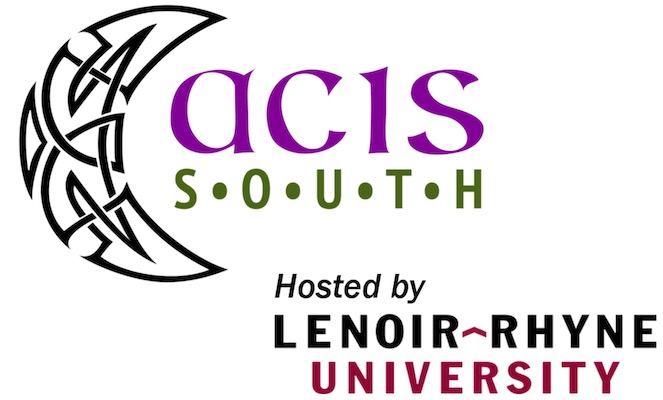Thomas O’Grady
University of Massachusetts, Boston
Thomas O’Grady is Professor Emeritus at the University of Massachusetts Boston, where he was Director of Irish Studies from 1984 to 2019. His articles, essays and reviews on Irish literary and cultural matters have been published in a wide variety of scholarly journals and general-interest magazines, including: Éire-Ireland, James Joyce Quarterly, Études Irlandaises, Irish University Review, New Hibernia Review, Joyce Studies Annual, and The Canadian Journal of Irish Studies. He is currently Scholar-in-Residence at Saint Mary’s College in Notre Dame, Indiana.
From Drumcliff to Bellaghy: the Graves of Irish Poets
Daniel Raines
University of St. Thomas, Houston
Daniel Raines is a graduate student at the University of St. Thomas in Houston, where he is working on his Master of Liberal Arts degree with concentrations in Irish Studies and English. He is a graduate of the University of Houston where he received his bachelor’s degree in English.
“A Lonely Impulse of Delight”: Parallelism in W.B. Yeats’ “An Irish Airman Foresees His Death”
This paper analyzes poetic patterns in W. B. Yeats’ poem “An Irish Airman Foresees His Death”. “Airman” is typically interpreted as an elegy discussing the death of Major William Robert Gregory of the Royal Flying Corps during World War I, or the Great War. William Robert Gregory was the son of Lady Augusta Gregory, who was a close friend and literary patron of W. B. Yeats.
Poets in Semitic languages tend to organize their lines thematically, rather than through rhyme scheme. Biblical scholars have recognized this tendency frequently throughout the Hebrew and Aramaic poetry in the Bible, such as in the books of Psalms and Proverbs, referring to the pattern as “parallelism”. By referring to the research and examples of modern Biblical scholars Kenneth E. Bailey and Robert Alter, this paper will analyze the ways Yeats seems to imitate Semitic poetry in “Airman”. It will provide a comparison between the patterns in Yeats’ poem and Semitic parallelism, as well as discuss the ramifications these patterns have on the traditional interpretations of this work.
Michael Deckard
Lenoir-Rhyne University
Michael Funk Deckard is Associate Professor of Philosophy at Lenoir-Rhyne University and was a Fulbright Scholar at the University of Bucharest. He has taught History of Ideas, Philosophy, and Ethics and courses on Joyce/ Irish thought. He has edited two books, Philosophy Begins in Wonder and The Science of Sensibility.
Between the German, the Greek, and the Irish: William Desmond on the Origin of the Sublime
Ahab is sublime—Melville’s Ahab—
erotics of selving bordering the infernal
in Ahab’s monomaniacal hatred of the hunted Moby Dick—
Moby Dick, the white monster, the blank Leviathan,
also hyperbolic and sublime, but whether
in evil or innocence remains in mystery.”
—William Desmond Reader, 128
This talk looks at the interpretation of the sublime from the living Irish poet-philosopher William Desmond. In his discussions of Edmund Burke, Kant, Hölderlin, and Hegel as much as Yeats and Joyce among others, we will see that there is a particularly philosophical origin, which is distinct from Kristeva, Derrida or Lyotard’s understanding of the sublime. Both unlike beauty and closer to fear or terror than love, the romantic origins of the sublime are deep in thought and experience. Neither purely Irish, or purely Greek, or purely German, they contain a germ of each, and it is to this finesse that the condition of ‘being between’ — or the sublime as ‘aesthetic infinite’ — finds a metaphysical home.
Whether with regards to desire in Desmond’s Desire, Dialectic, Otherness (Yale, 1987), idiocy in Philosophy and its Others (SUNY, 1990), or the art of Milton’s Satan—“sublime in revolt—and revolting” in the Intimate Universal (Columbia, 2016), the origin of the sublime is a tenor throughout his thought, including his less well known Being Between: Conditions of Irish Thought (Leabhar Breac, 2008), based on lectures he gave on Burke, Joyce, and Yeats among others in Galway. The sublime might even find a further origin in the ancient Greek tragedians, as recently explored in Steven Knepper’s “Heroes, Tyrants, Howls.” (REN, Winter 2020) and Dennis Vanden Auweele’s “Sacredness and Aesthetics” (Modern Theology, January 2021). I wish to further Desmond’s sublime by briefly examining his metaphysical account that is both sacred and secular, poetic and philosophical.
